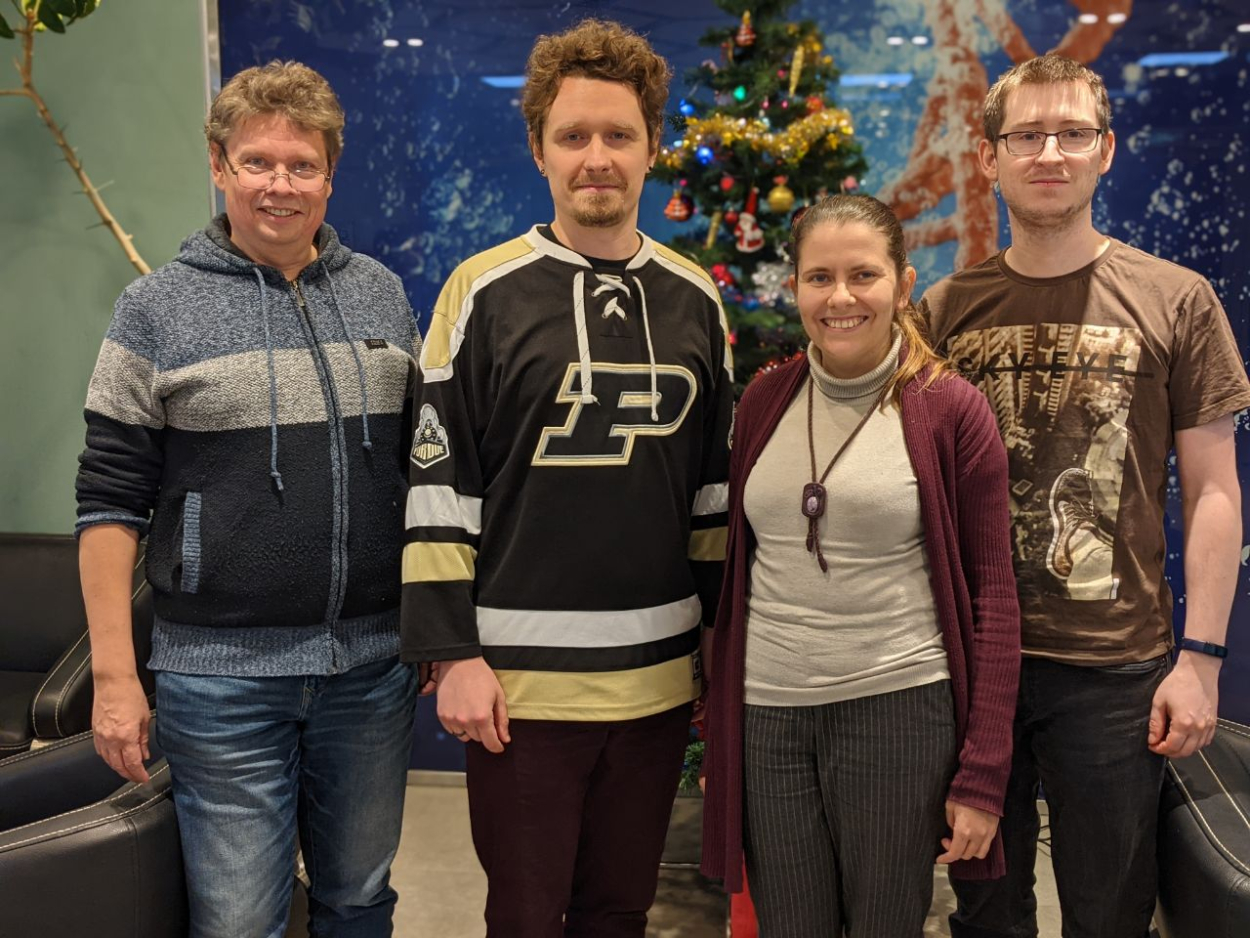SPbU and Tsinghua University scientists to model highly accurate protein structures, funded by a joint RSF-NSFC grant

Scientists at St Petersburg University together with their colleagues from Tsinghua University (China) will develop a new highly accurate method for modelling protein structures. This can help to create more effective drugs and answer fundamental questions on how proteins work. The collaborative project is supported by a grant from the Russian Science Foundation (RSF) and the National Natural Science Foundation of China (NSFC).
The grant proposals submitted to RSF and NSFC were peer reviewed on both the Russian and Chinese sides. The research groups selected by experts from both countries were identified as winners. Research carried out at St Petersburg University will receive support from the Russian Science Foundation (RSF) during three years: from 2021 to 2023. Similar research programme at Tsinghua University will be funded by the National Natural Science Foundation of China (NSFC).
The project pursued at St Petersburg University and Tsinghua University aims to develop a new technique for studying protein structures. It will combine two research methods already in wide use: X-ray diffraction analysis and Molecular Dynamics (MD) modelling. To achieve this, the scientists are working on a software solution that will make it possible to recreate protein structures more completely. It will use both static representation obtained by X-ray diffraction analysis and dynamic characteristics obtained by the MD method. On the Russian side, the project will be led by Professor Nikolai Skrynnikov, PhD, Head of the Biomolecular NMR Laboratory at St Petersburg University. On the Chinese side, it will be led by Professor Yi Xue, PhD, Principal Investigator at Tsinghua University.
‘The structures of many proteins have been solved by X-ray diffraction analysis to date. However, these structures have ‘‘blind spots’’ that can be of fundamental importance. For example, if a protein's body has a fairly rigid architecture, X-ray experimental data give us all the information we need. They make it possible for us to reconstruct coordinates and determine its structure with high accuracy. Yet protein molecules contain moving elements – for example, loops – which are often instrumental to the function of the protein. For example, mobile loops can serve as a kind of a ‘‘lid’’ that controls access to the active site of an enzyme protein. As it happens, for such mobile loops X-ray diffraction analysis does not work very well: it either does not see them at all, or localize them only poorly. In this case, the missing information can be obtained using Molecular Dynamics. We tried to create a hybrid methodology that combines both of these techniques,’ explains Nikolai Skrynnikov.
The data obtained in this way will improve existing knowledge about the protein structures. This can help drug developers to create more effective drugs and find better approaches to human treatment.
‘The rational drug design today is based on crystallographic structures. The development of protein engineering methods is also informed by protein coordinates in Protein Data Bank (PDB). Even a slight increase in accuracy and improvement in the quality of X-ray structures, such as we are able to achieve, will contribute to further advances in these areas,’ says Nikolai Skrynnikov.
The first steps to develop these ideas were made about 10 years ago, when Yi Xue was a postgraduate student with Nikolai Skrynnikov at Purdue University (USA). However, first attempts to refine protein structures using a new strategy have been a failure. A breakthrough came when mathematician Oleg Mikhailovskii, a graduate of St Petersburg University, joined the research team as a postgraduate student working with Nikolai Skrynnikov at the Department of Chemistry in Purdue University. Oleg Mikhailovskii’s interdisciplinary knowledge in the fields of biology, chemistry, biochemistry, mathematics and programming made it possible to design new software which combined two different research directions. Ultimately, Oleg Mikhailovskii created an ‘add-on’ for the Amber package (one of the world's two largest suits of biomolecular simulation programmes), which became a basis of his PhD dissertation. The solution developed by Oleg Mikhailovskii helps to obtain protein structures, while making the best use of the experimental X-ray diffraction data, as well as generalised structural information contained in the force field of Molecular Dynamics. He is currently working with Nikolai Skrynnikov at the Biomolecular NMR Laboratory in St Petersburg University.
Oleg Mikhailovskii points out that the software solutions that he and his colleagues are working on as part of the project automatically recreate protein structures based on X-ray diffraction and MD modelling data. Another potential advantage of this approach is the high computation speed. ‘Protein structures are essential for scientists around the world, as well as in the pharmaceutical industry. It takes a lot of time to refine the structures in the conventional way. Sometimes the process may take several days or more. Our algorithm requires only a few hours of computations, and in the future we expect to reduce this time to 10 minutes. Additionally, we plan to expand the range of structures that can be optimised using the protocol that we have developed,’ says Oleg Mikhailovskii.
Using these new opportunities, the researchers plan to systematically refine a significant part – tens of thousands – of protein structures contained in the world's Protein Data Bank (PDB). Additionally, the scientists intend to provide wide access to the new technology through the ARX (Amber-based Refinement for Protein Xtallography) web service. This resource created by Oleg Mikhailovskii and Sergei Izmailov, a postgraduate student in the Biomolecular NMR Laboratory, is now functioning in a test mode on the platform of St Petersburg University Computer Center. The research team plans to upgrade the existing service and expand its capabilities. The scientists anticipate that ARX will eventually turn into a popular tool for refining newly obtained X-ray structures.

